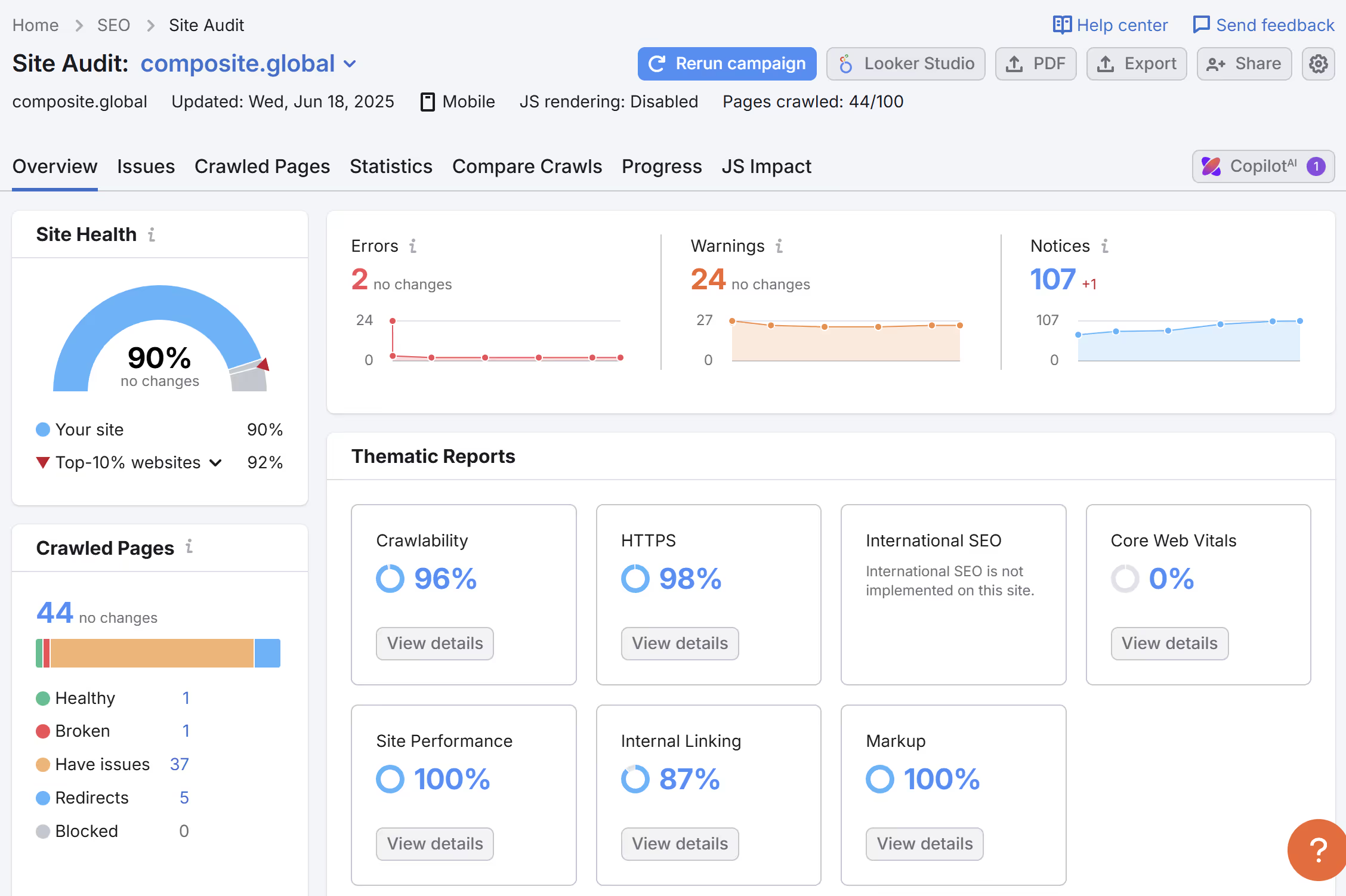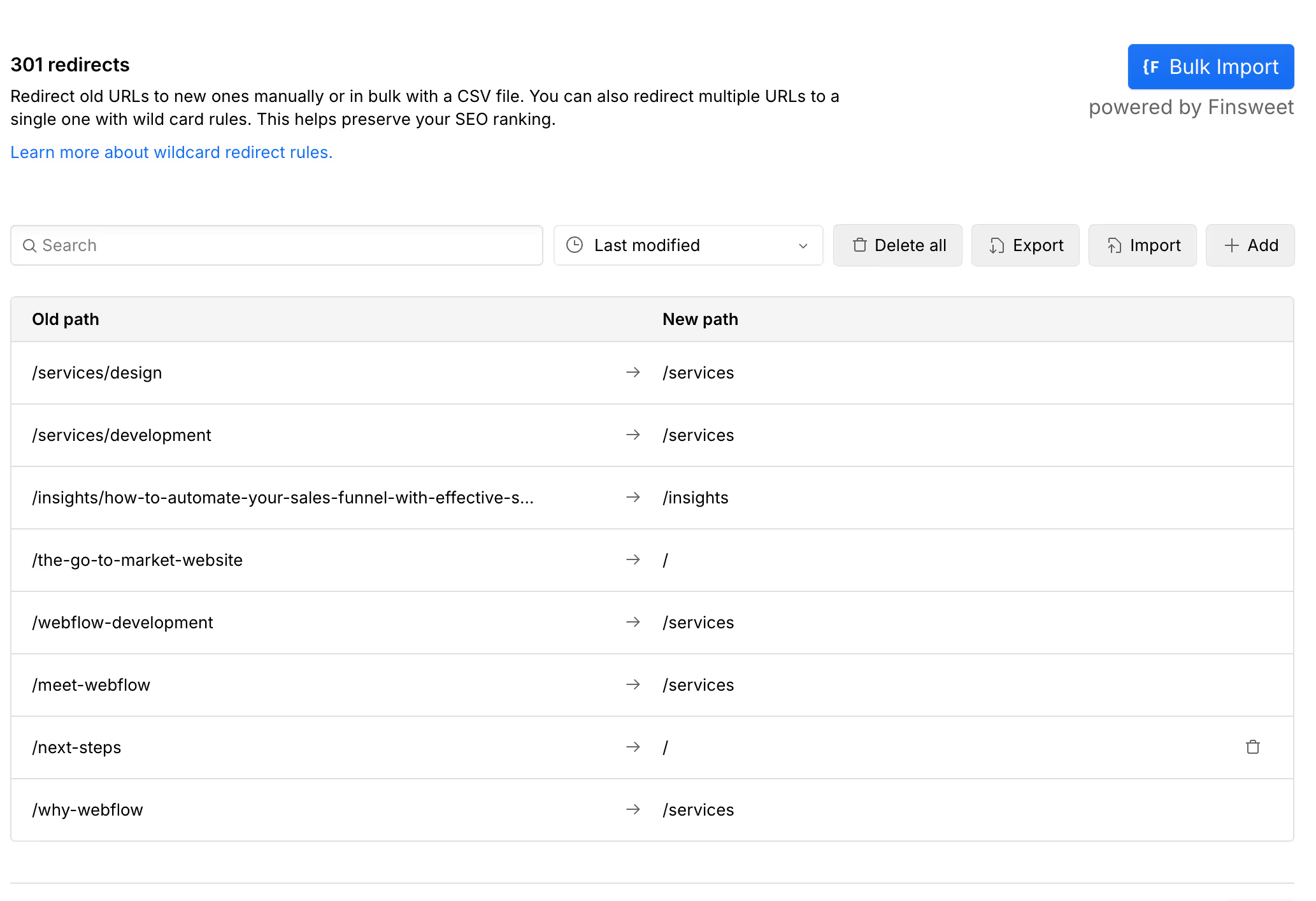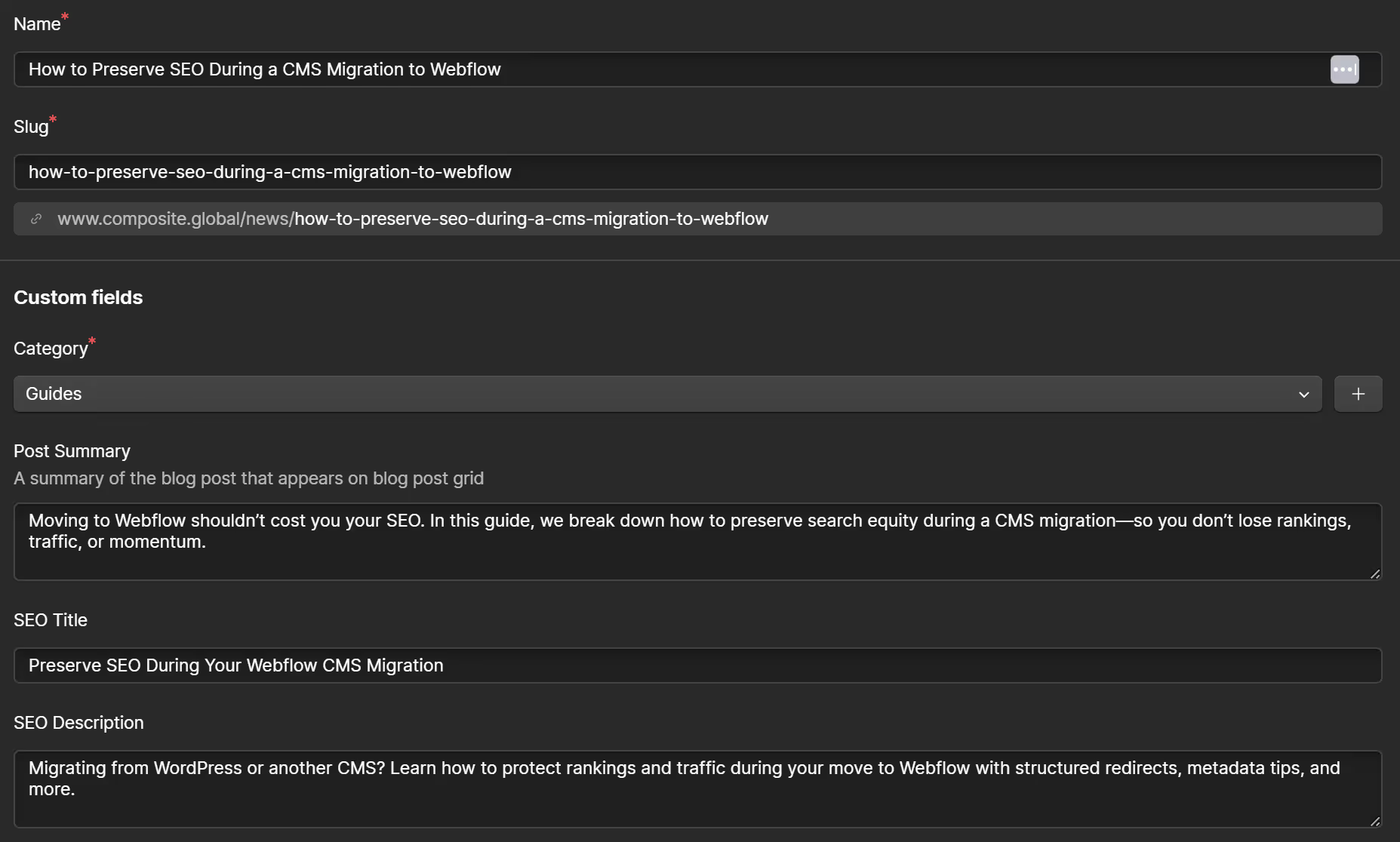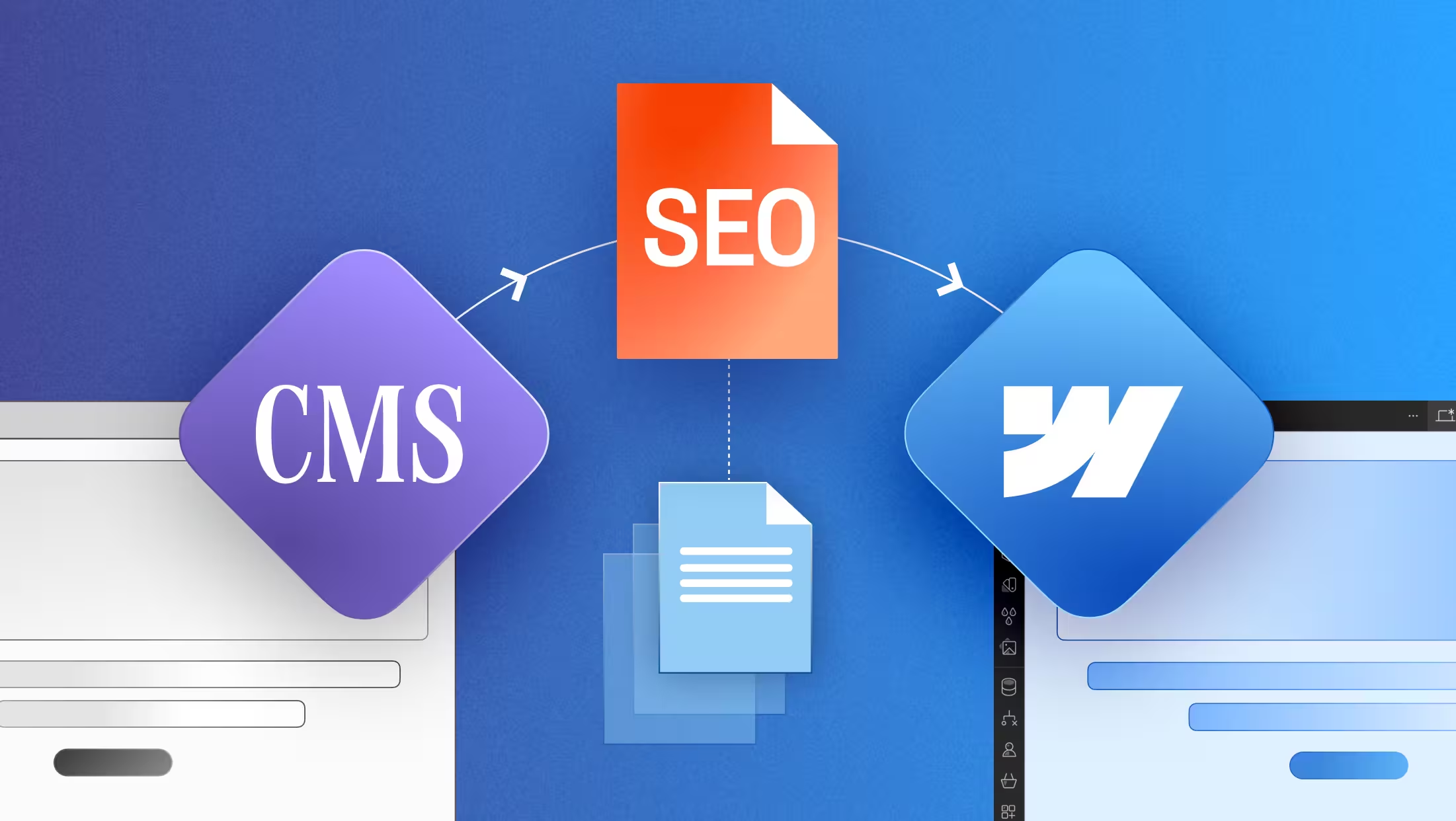Migrating your website to Webflow can unlock major benefits—better performance, smoother design control, faster publishing—but without the right planning, it can also tank your SEO.
Whether you're coming from WordPress, Squarespace, or a custom stack, preserving your rankings, traffic, and search equity requires more than a content copy-paste. It’s about precision: planning redirects, preserving metadata, and catching invisible changes that impact how search engines see your site.
At Composite, we’ve guided multiple clients through high-stakes Webflow migrations–check out our migration articles for step-by-step guides. Here’s how we help protect (and sometimes improve) SEO during a platform switch.
Run a Full SEO Audit of the Current Site
Before you move anything, you need a complete record of what’s working. That includes:
- URL structure and slug naming
- Page titles and meta descriptions
- Header hierarchy (H1, H2, etc.)
- Structured data (JSON-LD, microdata)
- Sitemap structure
- Internal linking patterns
We recommend using tools like Semrush to crawl your current site. Export everything. It’ll serve as your baseline and migration checklist.
For a deep dive on technical SEO elements in Webflow itself, see our guide: The Complete Guide to Technical SEO in Webflow.

Create a 1:1 Redirect Map
One of the most common (and costly) mistakes we see in migrations is skipping the redirect strategy.
In Webflow, it’s easy to overlook subtle differences in slug formatting, folder nesting, or CMS-generated URLs. Every old URL that changes must have a corresponding 301 redirect.
Redirect best practices:
- Avoid redirect chains, go directly from old URL to new URL
- Double-check blog slugs and category pages
- Don’t forget about PDFs, subfolders, or landing pages that live outside your nav
Use Webflow’s built-in 301 redirect manager under Site Settings > Publishing. If you hit volume limits, a reverse proxy or server-level redirect may be necessary.

Rebuild CMS Items Carefully
Webflow’s CMS is powerful, but it behaves differently than other platforms.
During migration, be mindful of:
- CMS slugs auto-generating based on collection names
- Image fields that may not support the same alt text or file names
- Meta fields (title, description, OG image) that need to be manually added or templated
- Dynamic fields that previously supported custom schema or structured data
Use Finsweet's Attributes or custom embeds to regain control if needed.

Reimplement Structured Data
Webflow doesn’t natively support schema.org markup in CMS templates, so you’ll need to add structured data manually. We recommend using JSON-LD via custom code embeds.
Common types to migrate:
- Organization
- Article or BlogPosting
- Breadcrumb
- Product or Service (if applicable)
Use Google’s Rich Results test to validate everything post-launch.
Optimize for Performance and Accessibility
Migration is the perfect time to clean up what’s slowing you down:
- Compress and reupload images (WebP or AVIF preferred)
- Add alt text everywhere—even in the CMS
- Test layouts for Cumulative Layout Shift (CLS) and Largest Contentful Paint (LCP)
- Run Lighthouse and WebPageTest audits pre- and post-launch
Animations, form behaviors, and layout decisions can impact perceived speed. If you’re adding motion, be sure it’s purposeful and performant.

Post-Launch SEO Checklist
You launched. Now what?
- Submit new sitemap to Google Search Console
- Validate your robots.txt and canonical tags
- Monitor crawl errors, indexation, and rankings
- Set up alerts for any spike in 404s or drops in organic traffic
- Use Ahrefs or SEMrush to monitor for broken backlinks
SEO doesn't end at launch—it just enters the monitoring phase.
Final Thoughts
A CMS migration to Webflow is more than just a platform switch, it’s a critical moment for your SEO. Done well, it can improve speed, structure, and clarity. Done poorly, it can wipe out years of rankings.
At Composite, we treat migrations like surgery: with a plan and a careful execution strategy. We’ve helped startups and enterprise teams migrate from legacy platforms to Webflow—without sacrificing performance or search rankings. If you’re preparing to make the switch to Webflow, let’s talk.




.svg)

.svg)











